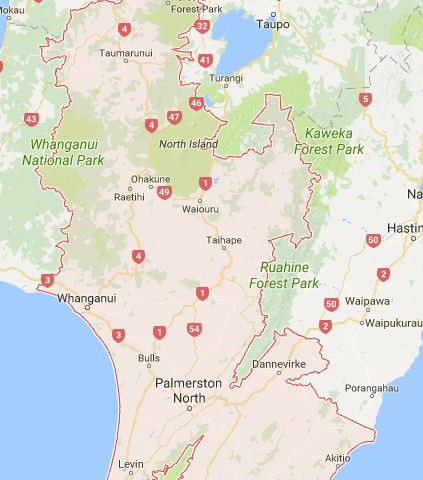Towns
The region had a usually resident population of 222,423 people at the 2006 census, the fifth-largest population in New Zealand.[citation needed] It has a lower than average population density, 10.3 people per square kilometre, compared with 13.1 for New Zealand. Between the 2001 and 2006 censuses the population rose by 1.6%, or 3,477 people.
There are two major urban areas. Palmerston North, with a resident population of 85,300 (June 2012 estimate), expanded as an educational centre and a supply centre for the surrounding rural hinterland. It became a city in 1930. The other major urban area is Whanganui, with an estimated resident population of 39,600 (June 2016s).
Other urban centres include Levin (19,550), Feilding (14,600), Dannevirke (6,000), Taumarunui (5,000), Foxton (5,000), and Marton (5,000). The region also includes the smaller towns of Bulls, Ohakune, Waiouru, Raetihi, Taihape, Woodville, Pahiatua, Eketāhuna, Ashhurst, Foxton Beach, Turakina, Sanson, Shannon and Manakau.
City life does not dominate, as half the population live outside a large urban area, over a third in small towns or rural areas. While manufacturing has become an important part of the economy, most businesses are agriculturally based and agriculture remains the linchpin.
The dominance of agriculture, combined with the relatively small scale of most urban areas, gives a rural quality to the region, quite distinct from the neighbouring Wellington Region. The rugged interior has become one of the main training areas for the New Zealand Defence Force, which maintain three bases in the region: RNZAF Base Ohakea, Linton Military Camp, and Waiouru Military Camp.
